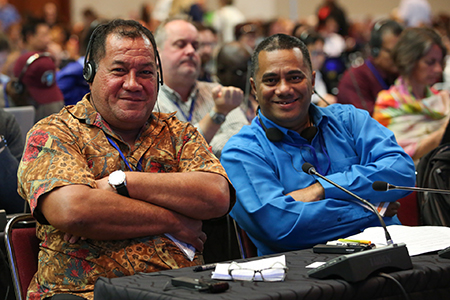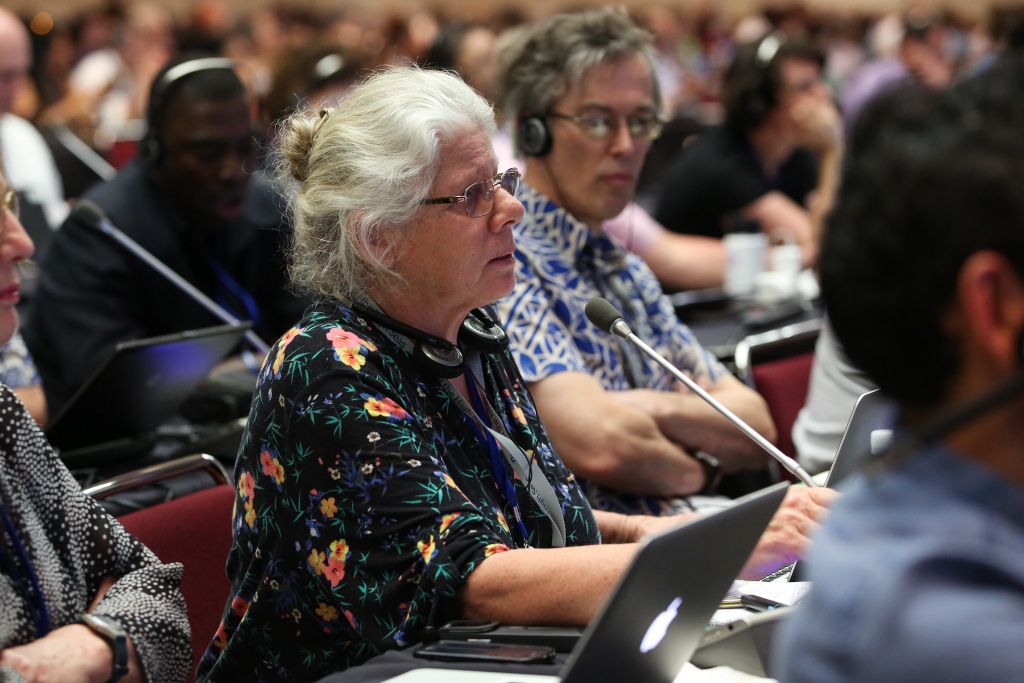The Members Assembly – A snapshot!
The Members’ Assembly is the highest decision-making body of IUCN during which IUCN’s 1,300+ Member organisations collectively decides on actions to address the most pressing and often controversial conservation and sustainable development challenges.
During the Assembly, held from 6-10 September 2016, 14 motions on policy issues and six motions related to the governance of the Union were discussed and voted on.
In a landmark decision, the IUCN Members’ Assembly voted to create a new category of membership for Indigenous peoples’ organisations. This will open the opportunity to strengthen the presence and role of Indigenous organisations in IUCN – a unique membership union gathering 217 state and government agencies, 1,066 NGOs, and networks of over 16,000 experts worldwide.
On the motion to include local and regional governmental authorities in the structure of the Union, the Congress approved the establishment of a working group on the role and membership of local and regional governments in IUCN to analyse the need and effects, develop a clear definition of regional government, and formulate a comprehensive and well considered new recommendation for the next Congress. Some key decisions focussed on climate change.
On IUCN’s response to the Paris Climate Change Agreement, the Congress requested the Director General to, inter alia: update and implement IUCN’s 2008 Carbon Offset Policy to reflect mitigation efforts consistent with the Paris Agreement and assess the climate change risks of IUCN’s built and financial assets; and support IUCN Members, Commissions and programmes that are assisting Parties to the Paris Agreement with the implementation of their NDCs.
On the Pacific region climate resiliency action plan as resolution 051, the Congress invited members from the Pacific Islands to develop a region climate resiliency action plan as a contribution towards the implementation of the Paris Agreement to address climate change in the Pacific region. It also encouraged them to utilise SDG 14 (on oceans), SDG 13 (on climate change), their targets and other climate-related targets under the SDGs as a basis on which to build a Pacific region climate resiliency action plan. In the next few months, we will continue to highlight resolutions.
Members from Oceania took part in the Assembly, as they exercised their rights to speak and vote and often discussed the impacts motions would have in the region. While theAssembly was a success, efforts to make a transformational shift will depend immensely on the solutions proposed by the Hawaii Commitments.
These include:
- engaging with the world’s rich faith and spiritual communities to gain deeper understanding of our connection with nature;
- enabling youth’s access to nature, and recognizing that youth has as much to teach as they have to learn;
- strengthening governance systems that manage the food production system, and maintaining crop genetic diversity and local systems of production;
- preserving and expanding marine protected areas, while linking diverse methods and tools to solve the multiple challenges facing oceans, including reducing plastic waste and addressing ocean acidification and warming;
- addressing the needs of local people, while improving protection of wildlife populations through laws and improved enforcement, behavioral change to reduce demand for illegal
- wildlife products, and enhancing cooperation at all levels;
- strengthening nature-based solutions to climate change, and providing solutions that reduce emissions; and
- engaging with governments, civil societies, and the private sector through partnership approaches.
The Hawai‘i Commitments highlights three critical issues for conservation: the nexus between biological and cultural diversity, and how their conservation and sustainability, which will require a combination of traditional wisdom and modern, knowledge; the significance of the world’s ocean for biodiversity, conservation and sustainable livelihoods; and the threats to biodiversity from habitat loss, climate change, invasive alien species, unsustainable exploitation and pollution.
The Commitments highlight two opportunities to achieve the necessary transformation. First, cultivating a culture of conservation, while respecting human rights and gender equity through linking spirituality, religion, culture and conservation and through engaging and empowering youth. The second area of opportunity of a planet at the crossroads, involves the challenges of: sustaining the global food supply and conserving nature; preserving the health of the world’s oceans; ending wildlife trafficking; climate change; and engaging with the private sector.
The full text of the Hawai‘i Commitments can be accessed here.


